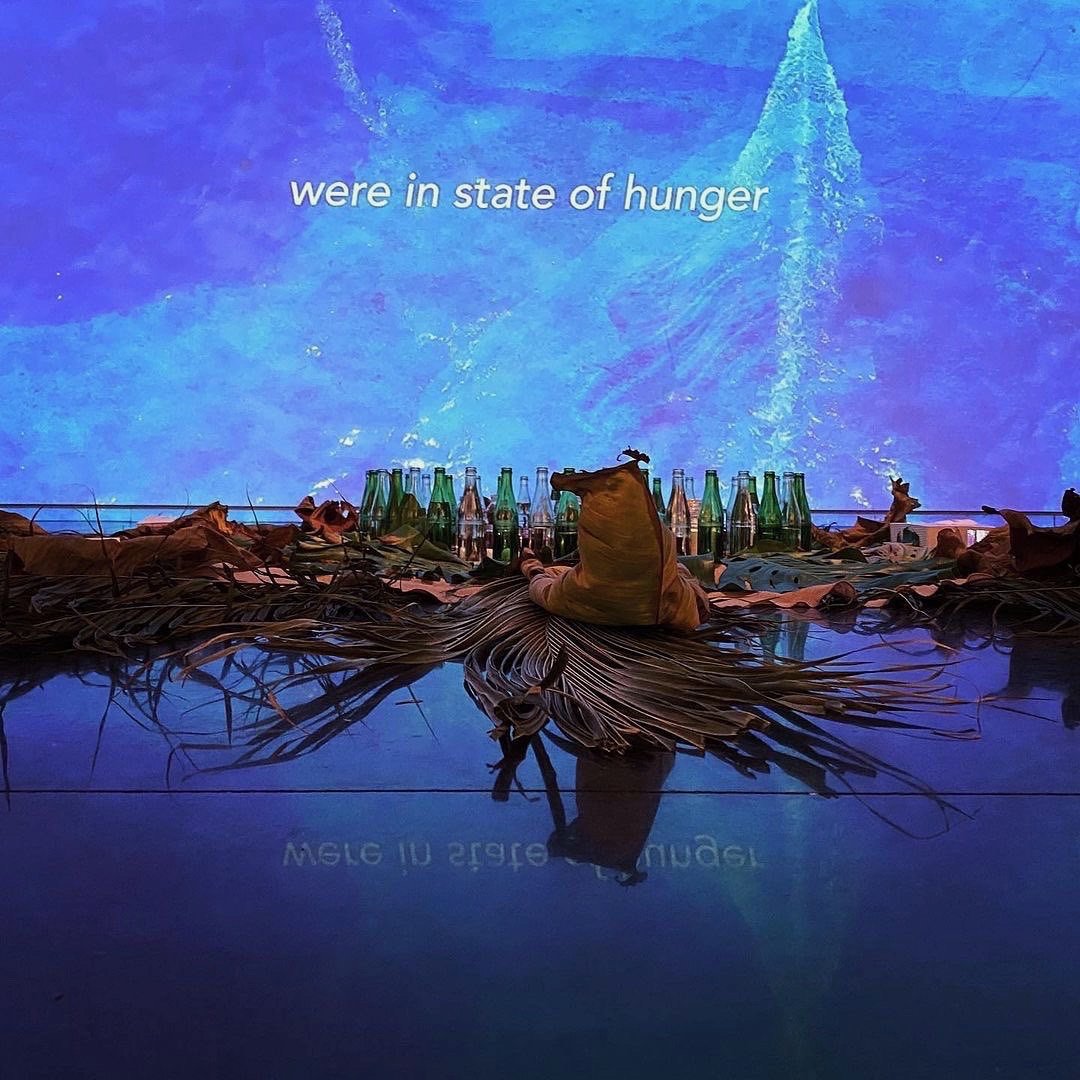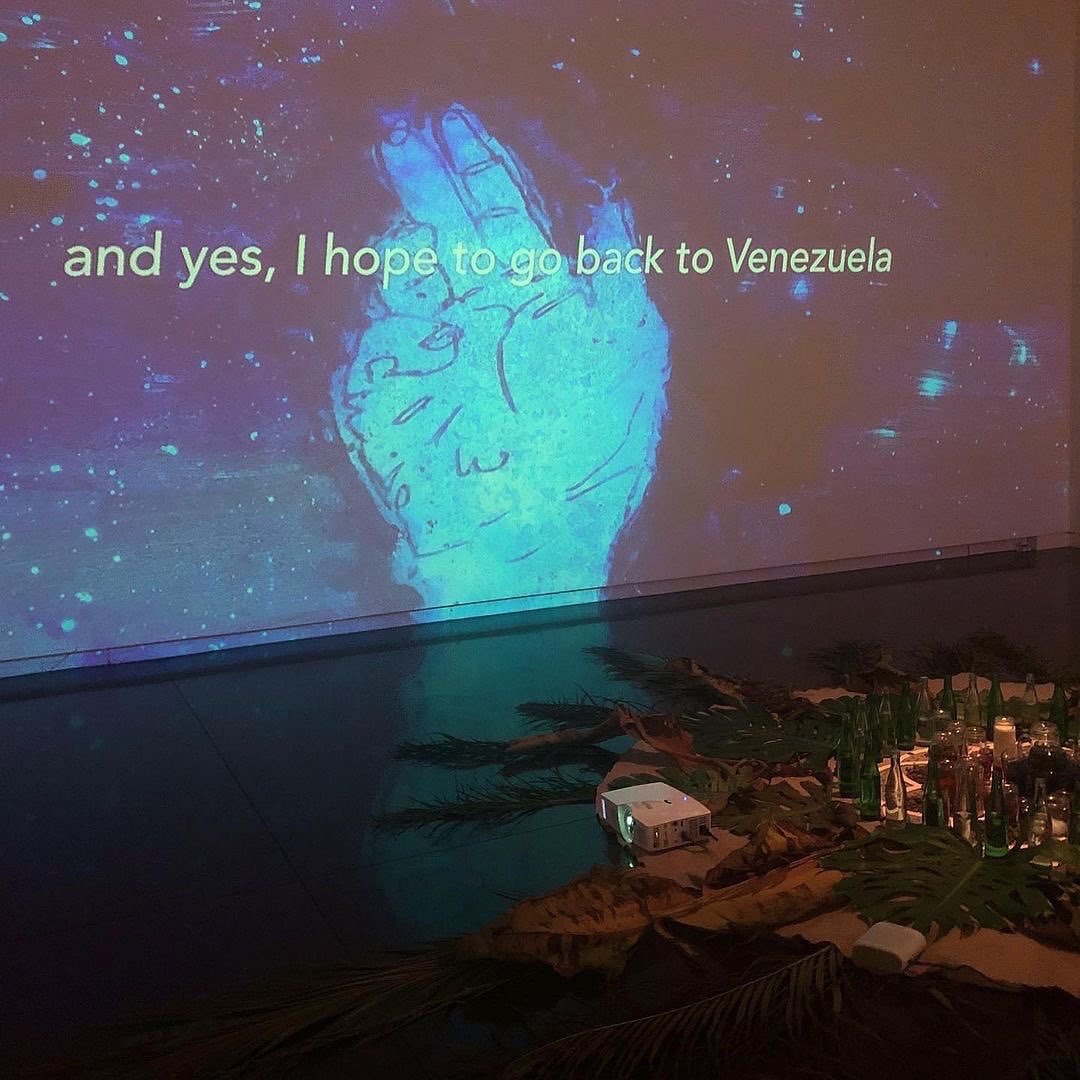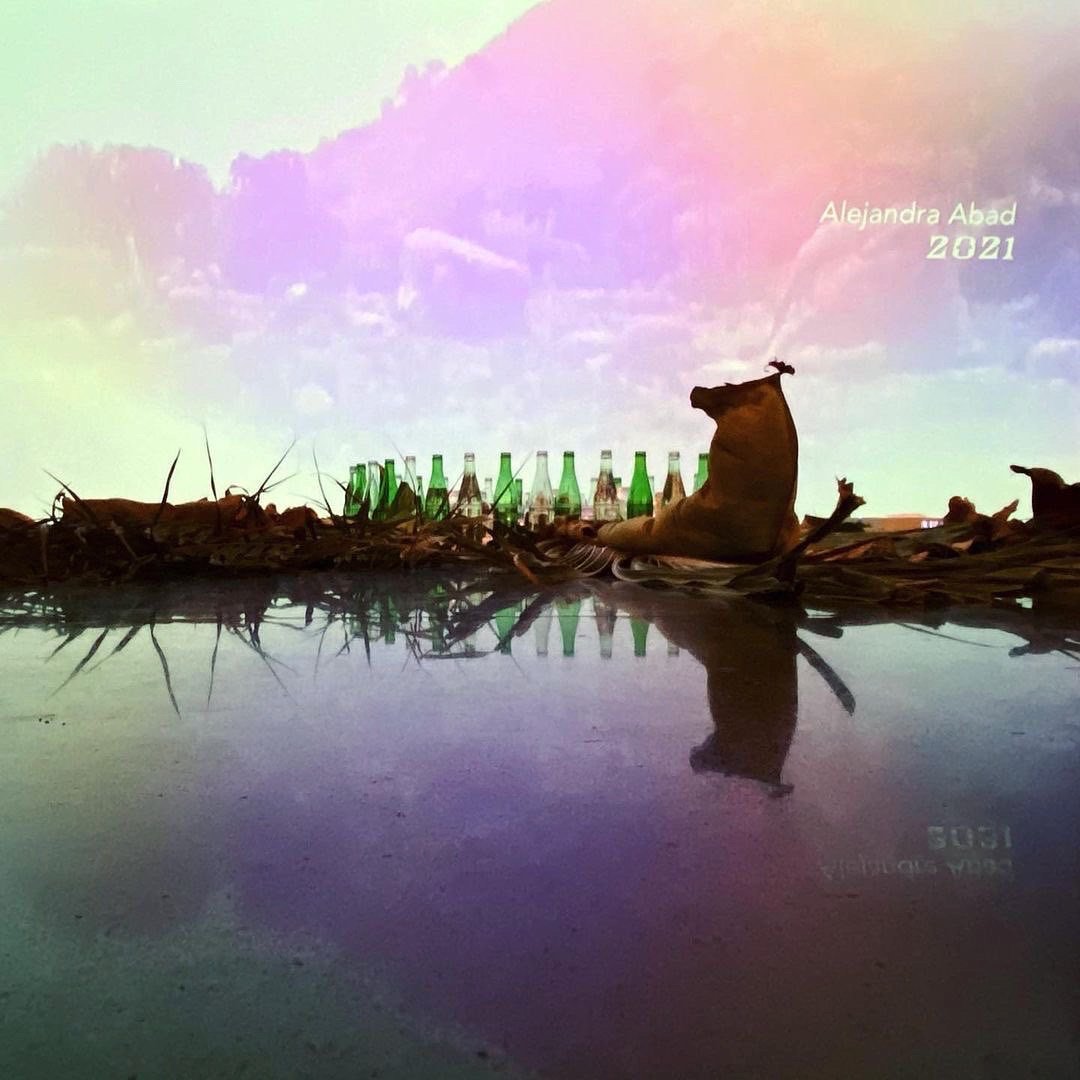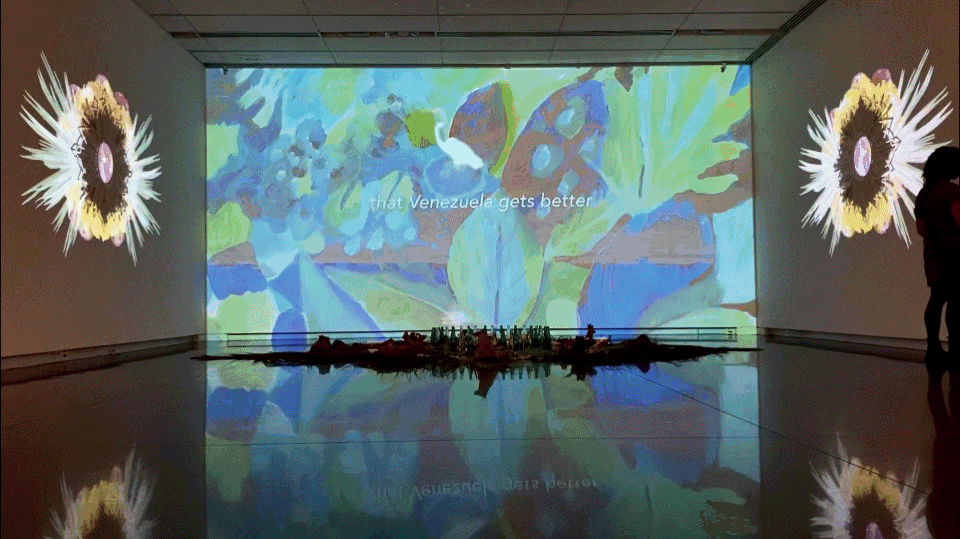UN PAÍS OLVIDADO: RELIQUIAS DE VIGENCIA
(FORGOTTEN COUNTRY: RELICS OF AGENCY), 2021
Exhibited at the University of Colorado Art Museum
Multimedia installation: 3 video channel
Interviews: Anonymous Participants
Music score by Steve Jones
Projection Mapped animation onto paper sculpture (Relics of Agency)
These animated vignettes – composed with Venezuelan objects, appropriated footage, imported goods, food, and stories – exist in a magical realist visual landscape, weaving real stories and collective memories about immigrant survival. Segments of the video present an original mythology centered on the Venezuelan exodus, mixed with origin stories and other myths from our collective roots; this mythology also critiques the neocolonial system of developed countries exploiting South America.
The videos connect with the creation of new relics, which elevate and reinterpret positive symbols from Venezuelan culture (in contrast with the current political-economic crisis in Venezuela). The project aims to connect pedagogy, national identity, and environmental damage of capitalism to the land, its fauna, flora, and people, while also exploring the gained hybrid identities that we can share with other fellow immigrants in this new land.

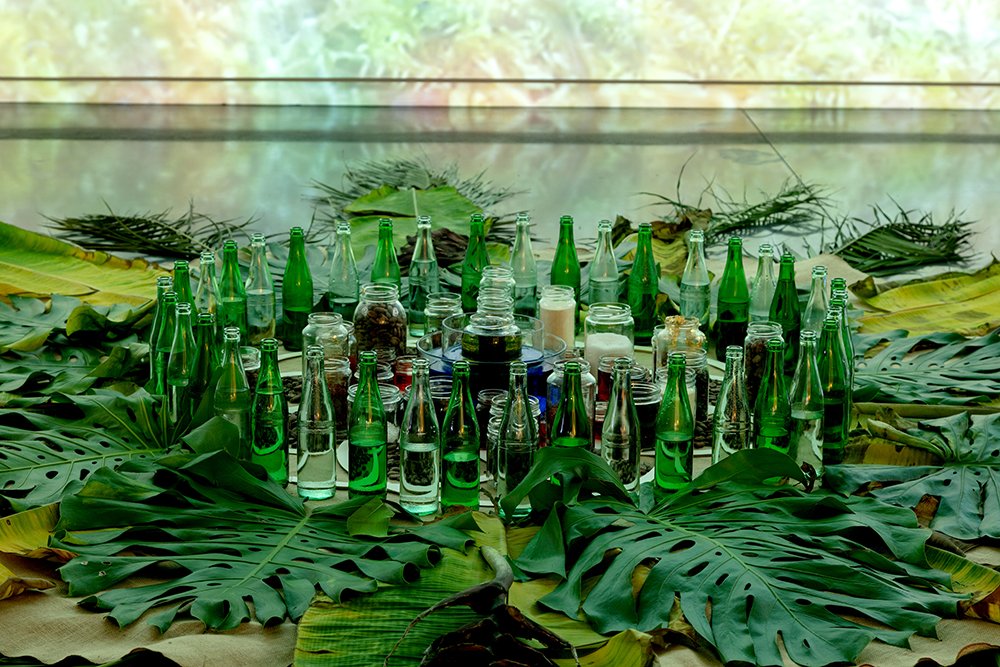
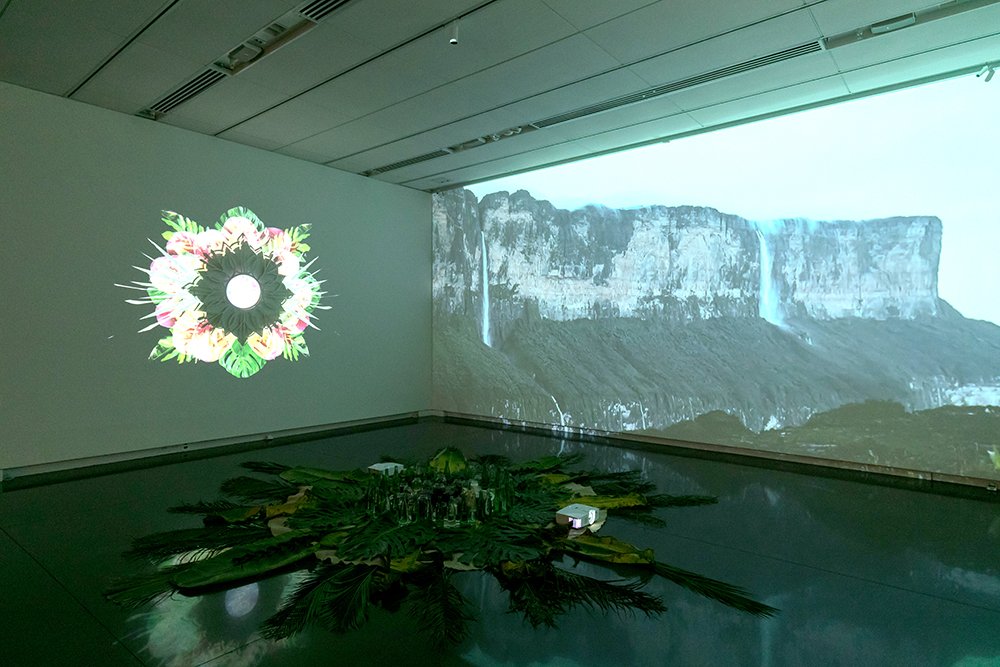
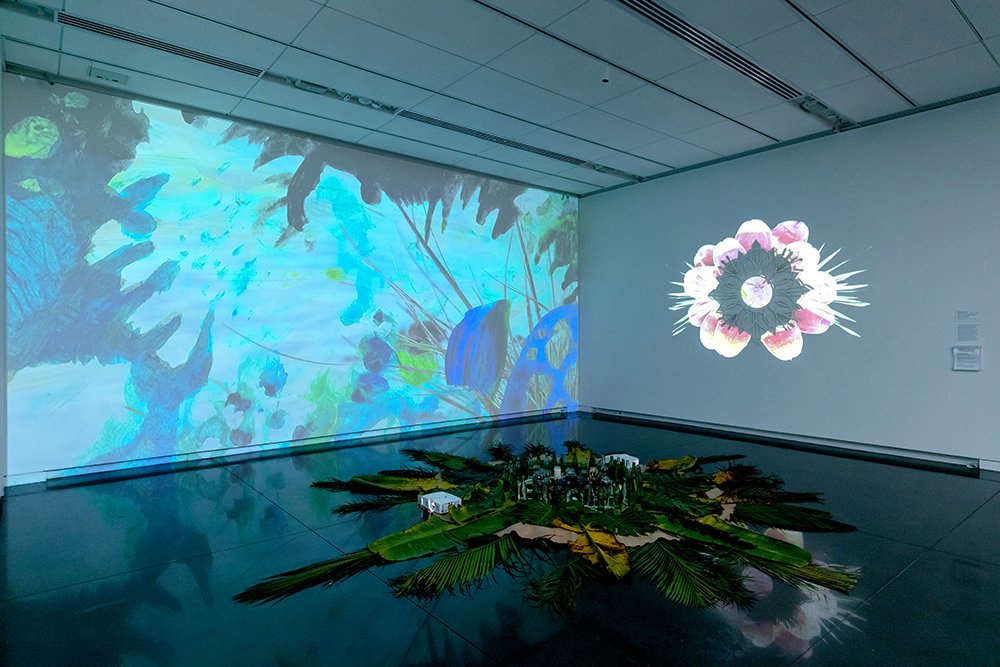
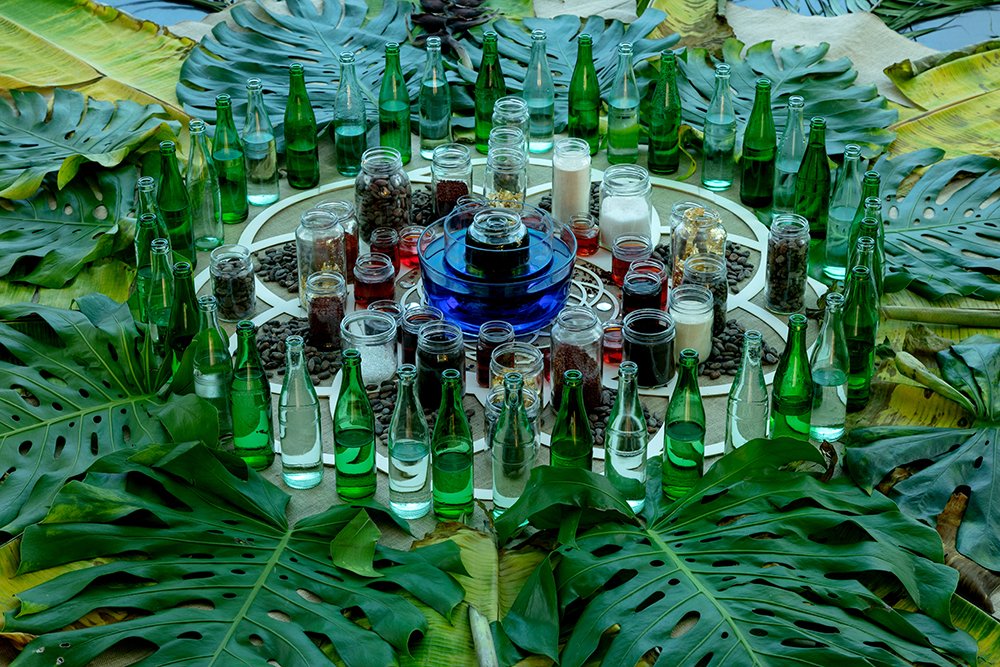

Arranged jars from food I have consumed
Center Piece
Smallest jar filled with black dye represents petroleum; it is nested in a corn oil jar.
Corn oil jar. In 2020, Mexico traded corn oil for millions of Venezuelan petroleum.
Blue food dye in a container of water represents the Maracaibo Basin (known as Lago Maracaibo), which is the largest body of water in South America, the second most ancient lake on earth, and an inlet to the Caribbean Sea.
Smaller containers with red dye represent bloodshed. Venezuela had the longest and most violent independence in South America, which eventually left the country in chaos. Caudillos and a series of dictators took over this petrostate where foreign powers controlled the little jefes.
Mirrors represent the energy crisis with the power outages at the Guri Dam. The reservoir at Guri provides hydroelectric power to Venezuelans situated in the Caroní River, Bolívar State.
Seeds represent hope.
Corn flour, rice, salt, water, onoto seeds. These are the ingredients needed to make arepas, and hallacas; these indigenous food traditions continue in spite of colonization.
Rocks. Reference the extraction of precious metals by foreign powers.
Gold leaf. References illegal miners who destroy the ecosystem and harm biodiversity.
Sugar cane. Represents the economic crisis; in 2020, producers urged tax imports.
Banana, Coconut, Areca Palm, Heliconia, Uña de danta, Mango Leaves. Imported from Florida, my second home – as it is to many other Caribbean & South American immigrants who were searching for a better life.
Venezuelan Cocoa Beans (imported from Canada).
Coffee. I once lived in El Cafetal, it was a coffee plantation where el Ávila surrounds Caracas.

